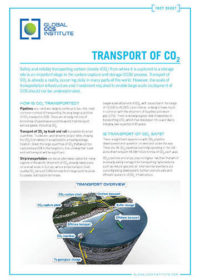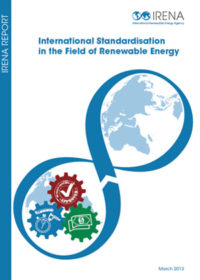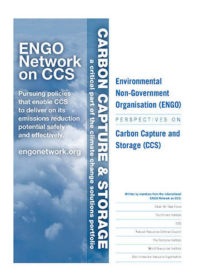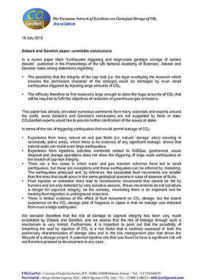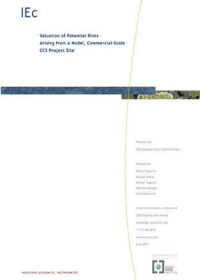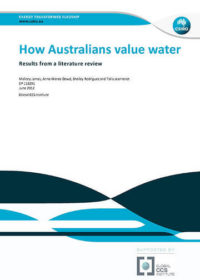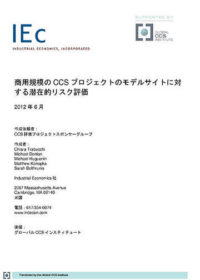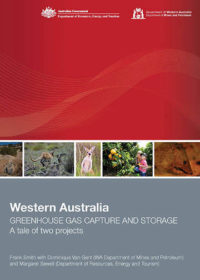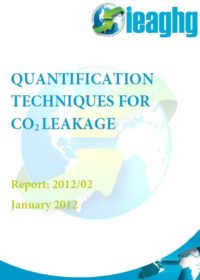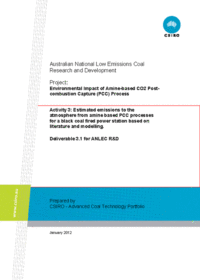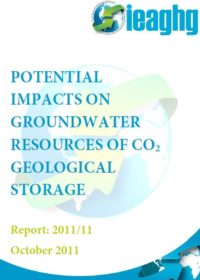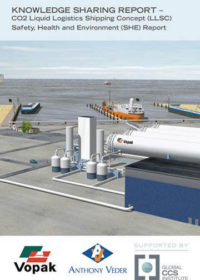Resources
Publications
Our publications, reports and research library hosts over 500 specialist reports and research papers on all topics associated with CCS.
View our Publication Library Disclaimer.
Filter by
Transport of CO2
1st March 2013
Topic(s): Carbon capture use and storage (CCUS), CO2 transport, Health safety and environment
Disclaimer
The content within the Global CCS Institute Publications, Reports and Research Library is provided for information purposes only. We make every effort and take reasonable care to keep the content of this section up-to-date and error-free. However, we make no claim as to its accuracy, currency or reliability.
Content and material featured within this section of our website includes reports and research published by third parties. The content and material may include opinions and recommendations of third parties that do not reflect those held by the Global CCS Institute.
International standardisation in the field of renewable energy
1st March 2013
Topic(s): Engineering and project delivery, Health safety and environment, Renewables
The key message from this report is that it is crucial to ensure a strategic pathway in standardisation for renewable energy technologies, taking into account the requirements and priorities of all involved stakeholders.
Disclaimer
The content within the Global CCS Institute Publications, Reports and Research Library is provided for information purposes only. We make every effort and take reasonable care to keep the content of this section up-to-date and error-free. However, we make no claim as to its accuracy, currency or reliability.
Content and material featured within this section of our website includes reports and research published by third parties. The content and material may include opinions and recommendations of third parties that do not reflect those held by the Global CCS Institute.
Environmental non-government organisation (ENGO) perspectives on carbon capture and storage (CCS)
4th December 2012
Topic(s): Carbon capture use and storage (CCUS), Health safety and environment
Disclaimer
The content within the Global CCS Institute Publications, Reports and Research Library is provided for information purposes only. We make every effort and take reasonable care to keep the content of this section up-to-date and error-free. However, we make no claim as to its accuracy, currency or reliability.
Content and material featured within this section of our website includes reports and research published by third parties. The content and material may include opinions and recommendations of third parties that do not reflect those held by the Global CCS Institute.
Zoback and Gorelick paper: unreliable conclusions
3rd August 2012
Topic(s): Carbon capture use and storage (CCUS), Health safety and environment
The CO2Geonet Network of Excellence, based on extensive studies and scientific literature on CO2 geological storage including seismic risk, states that the technology can be deployed in a safe and efficient manner to reduce CO2 emissions. They support the importance of a thorough research for each location in order to determine whether it is suitable for CO2 storage, both from a safety perspective and from the climate issue. Although Zoback and Gorelick describe a process that may eventually lead to the release of CO2, this and many other scenarios all form an integral part of any correct geological storage site-selection process.
Disclaimer
The content within the Global CCS Institute Publications, Reports and Research Library is provided for information purposes only. We make every effort and take reasonable care to keep the content of this section up-to-date and error-free. However, we make no claim as to its accuracy, currency or reliability.
Content and material featured within this section of our website includes reports and research published by third parties. The content and material may include opinions and recommendations of third parties that do not reflect those held by the Global CCS Institute.
Valuation of potential risks arising from a model, commercial-scale CCS project site
1st June 2012
Topic(s): Carbon capture use and storage (CCUS), Engineering and project delivery, Health safety and environment
A diverse group of organisations from industry, government, and the environmental community jointly sponsored Industrial Economics (IEc), an expert in environmental economics and natural resource damage assessment, to develop and test a model approach for valuing the economic damages arising from a well-sited and well-managed CCS project. These damages included environmental and human health impacts arising from a range of potential events such as pipeline ruptures and subsurface leakage. They do not address potential impacts from facility construction or routine operation, nor do they address potential impacts to workers, business interruption, facility repair or similar ‘private’ costs internal to the operator. The model was successfully developed and applied to a ‘realistic’ project based on the publicly available risk assessment for a site from the FutureGen 1.0 site selection process. The project was planned to inject 50 million metric tons of CO2 over 50 years and to have a 50 year post-injection period (for a 100-year analysis period).
This site-specific application of the model showed that the ‘most likely’ (50th percentile) estimated damages arising from CO2 totalled approximately $7.3 million and ‘upper end’ (95th percentile) estimated damages totalled approximately $16.9 million. On a per metric ton basis, these results translate into ‘most likely’ (50th percentile) estimated damages of $0.15 per metric ton and ‘upper end’ (95th percentile) estimated damages of $0.34 per metric ton. When combined, the estimated damages for CO2 and H2S were roughly 10-15 per cent higher.
It is important to note that the range of damage estimates is highly sensitive to site-specific data. The sponsor group concludes that the tools exist to estimate prospective financial damages. Further, the sponsor group has developed insight into the magnitude and timing of dollar amounts that are likely to be at risk and the conditions under which they may be at risk at a well-selected and well-managed CCS project. This analytic approach is based on generally accepted practices within the financial and insurance industries, and can be applied, with adjustment for location, to CCS projects around the world.
Disclaimer
The content within the Global CCS Institute Publications, Reports and Research Library is provided for information purposes only. We make every effort and take reasonable care to keep the content of this section up-to-date and error-free. However, we make no claim as to its accuracy, currency or reliability.
Content and material featured within this section of our website includes reports and research published by third parties. The content and material may include opinions and recommendations of third parties that do not reflect those held by the Global CCS Institute.
How Australians value water: results from a literature review
1st June 2012
Topic(s): Carbon capture use and storage (CCUS), Health safety and environment
This intends to inform the reader of values and meanings relating to water in Australia, how these values break down by demographic group, and previous successes and failures in involving Australian communities in water-related decision making. In doing so, it aims to support mutual understanding and effective two-way engagement between the carbon capture and storage (CCS) industry and Australian communities, given that CCS, as an energy technology has potential impacts on water resources.
Disclaimer
The content within the Global CCS Institute Publications, Reports and Research Library is provided for information purposes only. We make every effort and take reasonable care to keep the content of this section up-to-date and error-free. However, we make no claim as to its accuracy, currency or reliability.
Content and material featured within this section of our website includes reports and research published by third parties. The content and material may include opinions and recommendations of third parties that do not reflect those held by the Global CCS Institute.
商用規模のCCSプロジェクトのモデルサイトに対する潜在的リスク評価
1st June 2012
Topic(s): Carbon capture use and storage (CCUS), Engineering and project delivery, Health safety and environment
本調査の目的は、結果の統計的限界を明確にしつつ、CCSプロジェクトによる推定損害額を算出することである。具体的には、以下が調査目的に含まれる。
- CCSプロジェクトによる推定損害額を算出するために、コンピューターによるスプレッドシートモデルを構築すること。このモデルは、CCSプロジェクトに伴う多様な潜在的影響を評価するために、損害評価の分野において一般的に認められた分析ツールを統合したものである。モデルアウトプットは、結果の統計的範囲を明確にできるように設計されている。特に、損害が不明確であるため、本調査では「最も可能性の高い」損害額(50パーセンタイル値)及び「上限の」損害額(95パーセンタイル値)に焦点を当てている。
- 本モデルの概念を実証するため、このモデルを「現実的な」プロジェクトに適用すること。可能性のある複数の選択肢の検討の結果、分析目的に沿った「現実的な」プロジェクトとしては、FutureGen 1.0プロジェクトの三箇所の最終候補地が適していると判断された。本調査では、テキサス州Jewettサイトに限定して、推定損害額を算出する。
以下では、分析的アプローチの概要及び基礎的な仮定を含む、スプレッドシートモデルから得られた予備的検討結果の概略を示す。
Disclaimer
The content within the Global CCS Institute Publications, Reports and Research Library is provided for information purposes only. We make every effort and take reasonable care to keep the content of this section up-to-date and error-free. However, we make no claim as to its accuracy, currency or reliability.
Content and material featured within this section of our website includes reports and research published by third parties. The content and material may include opinions and recommendations of third parties that do not reflect those held by the Global CCS Institute.
Western Australia greenhouse gas capture and storage: a tale of two projects
31st May 2012
Topic(s): Carbon capture use and storage (CCUS), Health safety and environment
This report, developed by the Western Australian and Australian Government, delves into the two current CCS projects being developed in Western Australia – the South West Hub and the Gorgon LNG Project. The similarities and differences between the Projects are discussed, including their social and environmental impact, and reservoir geology.
Together these projects have the potential to store 11 per cent of Western Australia’s CO2 emissions.
Disclaimer
The content within the Global CCS Institute Publications, Reports and Research Library is provided for information purposes only. We make every effort and take reasonable care to keep the content of this section up-to-date and error-free. However, we make no claim as to its accuracy, currency or reliability.
Content and material featured within this section of our website includes reports and research published by third parties. The content and material may include opinions and recommendations of third parties that do not reflect those held by the Global CCS Institute.
Quantification techniques for CO2 leakage
24th January 2012
Topic(s): Carbon capture use and storage (CCUS), CO2 storage, Health safety and environment
This study aimed at identifying and reviewing monitoring methods which have so far shown the potential to quantify CO2 leakages from a geological storage site. The report primarily focuses on leaked CO2 which may reach the ground or seabed surface, i.e. the atmosphere or the water column, as defined in the EU ETS. The main body of the report presents a detailed description of the technologies that can measure CO2 leakage from potential point and/or diffuse sources, providing a detailed review of the quantification performance of these methods.
Disclaimer
The content within the Global CCS Institute Publications, Reports and Research Library is provided for information purposes only. We make every effort and take reasonable care to keep the content of this section up-to-date and error-free. However, we make no claim as to its accuracy, currency or reliability.
Content and material featured within this section of our website includes reports and research published by third parties. The content and material may include opinions and recommendations of third parties that do not reflect those held by the Global CCS Institute.
Estimated emissions to the atmosphere from amine based PCC processes for a black coal fired power station based on literature and modelling
1st January 2012
Topic(s): Carbon capture use and storage (CCUS), CO2 capture, Health safety and environment
Disclaimer
The content within the Global CCS Institute Publications, Reports and Research Library is provided for information purposes only. We make every effort and take reasonable care to keep the content of this section up-to-date and error-free. However, we make no claim as to its accuracy, currency or reliability.
Content and material featured within this section of our website includes reports and research published by third parties. The content and material may include opinions and recommendations of third parties that do not reflect those held by the Global CCS Institute.
Potential impacts on groundwater resources of CO2 geological storage
11th October 2011
Topic(s): Carbon capture use and storage (CCUS), CO2 storage, Health safety and environment
The main objective of the present study is: (1) to identify geological settings with potential juxtaposition of potable groundwater resources and storage sites, (2) to provide an overview of potential mechanisms of quantitative and qualitative impacts of storage schemes on overlying aquifers, (3) to assess the relevance of those mechanisms through the analysis of results obtained on natural and industrial analogues, (4) to demonstrate the relevance of the potential impacts as identified/quantified by modelling approaches, (5) to address the relevance of potential impacts with respect to current regulation on storage and on water protection and environmental impact assessment regulations and (6) to discuss the remedial actions that can be implemented once the leakage of or brine is detected.
Disclaimer
The content within the Global CCS Institute Publications, Reports and Research Library is provided for information purposes only. We make every effort and take reasonable care to keep the content of this section up-to-date and error-free. However, we make no claim as to its accuracy, currency or reliability.
Content and material featured within this section of our website includes reports and research published by third parties. The content and material may include opinions and recommendations of third parties that do not reflect those held by the Global CCS Institute.
Knowledge sharing report. CO2 liquid logistics shipping concept (LLSC): safety, health and environment (SHE) report
22nd June 2011
Topic(s): Carbon capture use and storage (CCUS), CO2 hubs, CO2 transport, Health safety and environment
To support the early deployment of CCS in Rotterdam and the development of a Rotterdam CCS Network, the Global CCS Institute supported Vopak and Anthony Veder to conduct a feasibility study on their CO2 liquid logistics shipping concept that will provide emitters with a complete logistical transportation solution for captured CO2 from their site to an offshore storage location.
This concept comprises a CO2 terminal (or a ‘CO2 hub’) which is capable of gathering CO2 from multiple sources and distributing it via multiple transportation modalities to various sinks. This will provide maximum flexibility and reliability to both emitters and storage operators, eventually leading to a reduced cost of CCS.
In the hub, the CO2 is collected from various sources by both onshore pipelines and barges, and is subsequently sent out via offshore pipelines and sea-going vessels that are capable of discharging on a standalone basis offshore. This report details the safety aspects of the hub concept.
Disclaimer
The content within the Global CCS Institute Publications, Reports and Research Library is provided for information purposes only. We make every effort and take reasonable care to keep the content of this section up-to-date and error-free. However, we make no claim as to its accuracy, currency or reliability.
Content and material featured within this section of our website includes reports and research published by third parties. The content and material may include opinions and recommendations of third parties that do not reflect those held by the Global CCS Institute.
